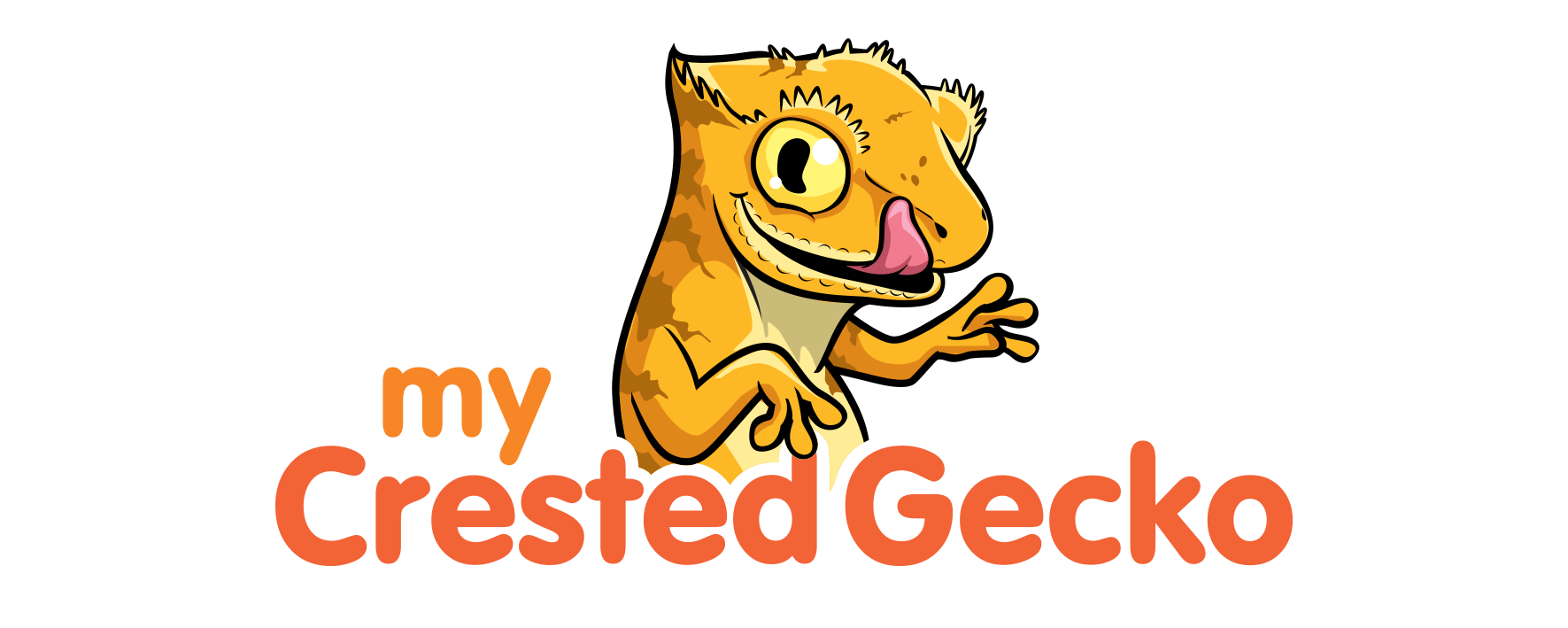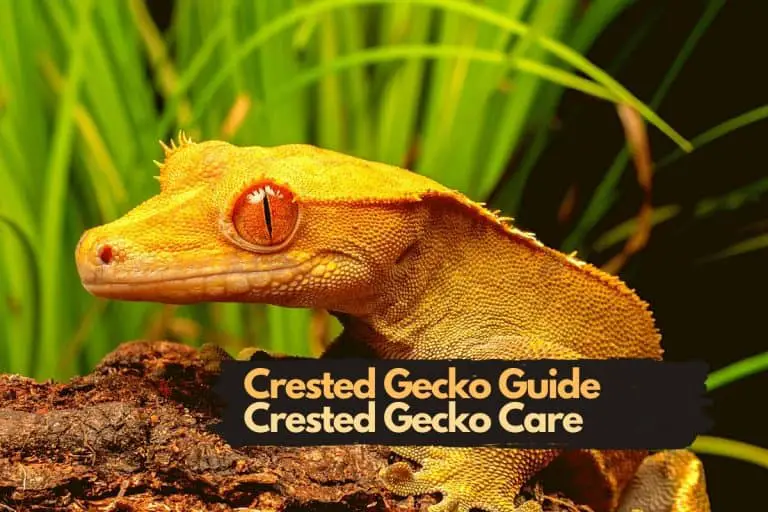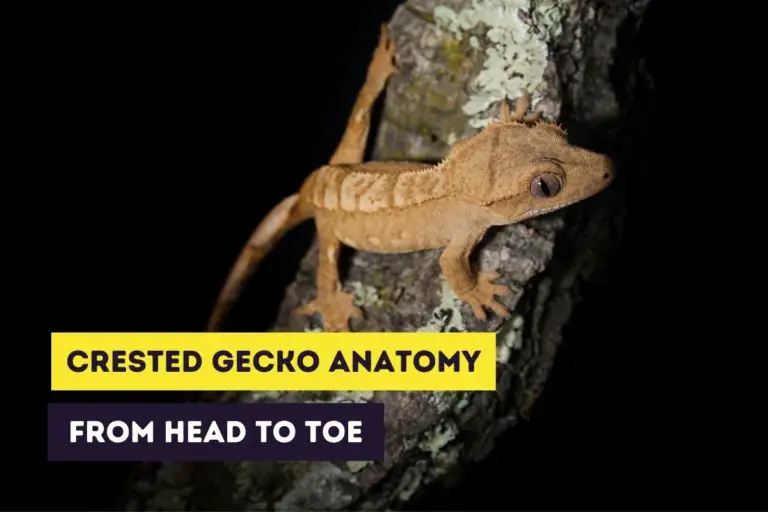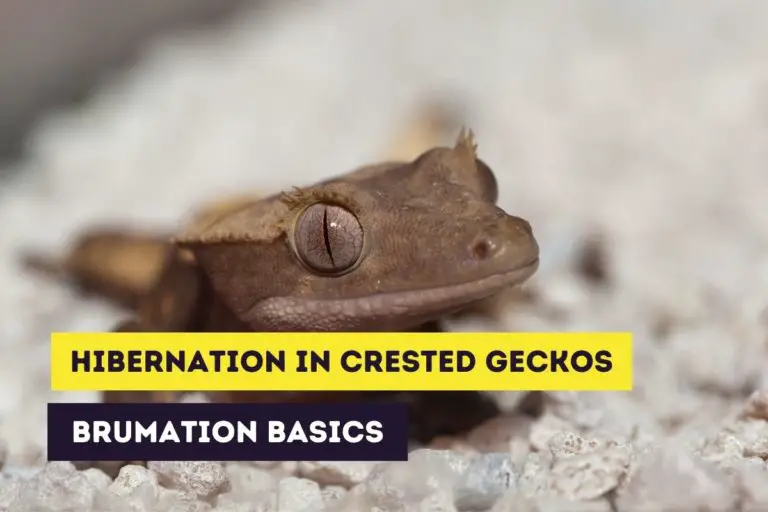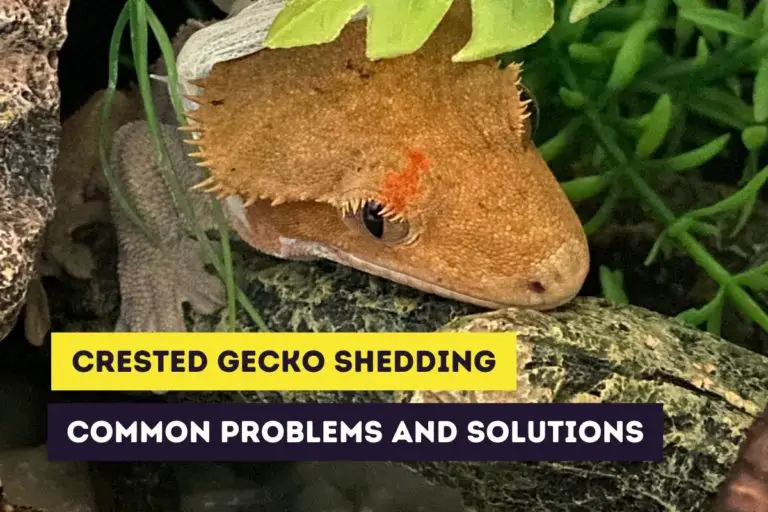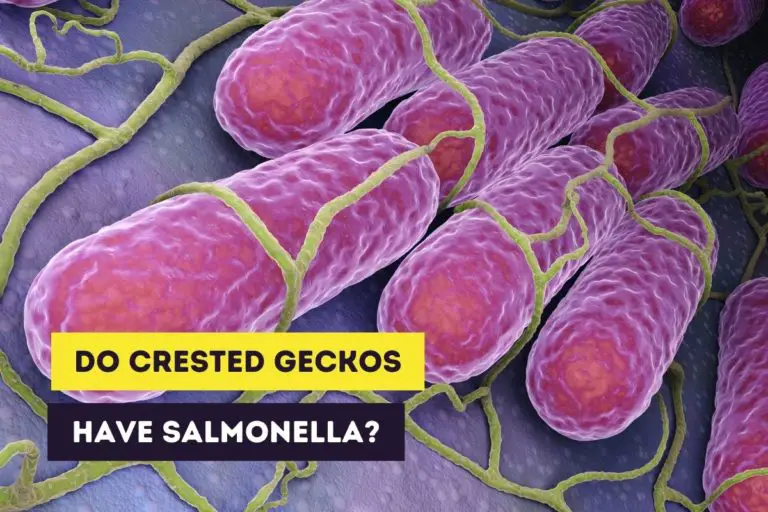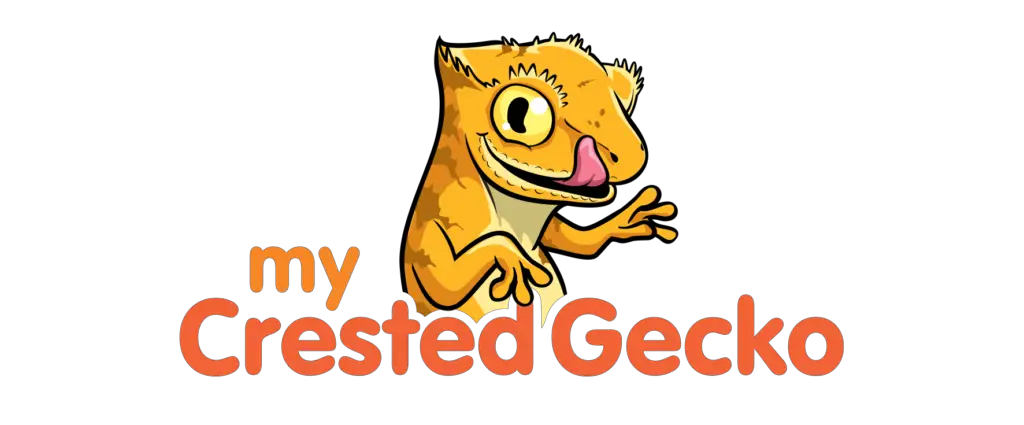Crested Gecko Tail Loss and Tail Injuries (Reasons for Tail Loss)
A lot of lizards have the ability to lose their tail and grow it back. These regenerative abilities are one of the hallmarks of lizards. When you’ve got a pet crested gecko there’s a risk that it will lose its tail sooner or later. But does this tail grow back?
Crested gecko tail loss can be caused by (extreme) stress or when your crested gecko feels threatened. The process of tail loss (also called autotomy) is a natural defense mechanism of your crested gecko. Contrary to most gecko species, a crested gecko won’t regrow its tail.
Although crested geckos can live a long life without a tail, it’s best to prevent tail loss and other injuries. A tail loss is a stressful situation for a crested gecko and should be avoided for this reason. But with the right knowledge, you can prevent tail loss as much as possible.
In this article, you’ll learn about the anatomy and use of the crested gecko tail, the reasons for tail loss and how you can prevent it. I’ll also discuss other tail injuries and what you should do to prevent them.
If you’re interested in stickers or other products of crested geckos, you can always visit our Etsy Shop, which is called Artful Animalia. We currently only send stickers in the United States. If you’re interested in certain crested gecko-related products, don’t hesitate to contact us.
This site contains affiliate links to products we recommend and use ourselves. We may receive a commission for purchases that you make through these links. If you’re interested in learning more about our affiliate links, please visit our (affiliate) disclaimer.
The Crested Gecko Tail
Anatomy of the crested gecko tail
Crested geckos have a long and slender tail. The tail makes up about one half of the total body length. The tail has an adhesive patch on the end which allows the crested gecko to stick easily to branches and other surfaces.
Another important feature of the tail of a crested gecko is that it’s prehensile. Just like certain monkeys they can use the tail to hold on and grasp objects. You can use this prehensile ability to handle your crested gecko without really grabbing the tail (but I’ll discuss that in a minute).
Use of the crested gecko tail
Wild crested geckos use their slender tail to easily jump through foliage and to balance themselves when jumping between branches. As the crested gecko grows up it will often lose its tail in a process called autotomy. Most wild adult crested geckos won’t have any tails contrary to most pet crested geckos.
The reason why adult crested geckos lose their tails is still debated but it’s possible that the tail loses its functionality as crested geckos become older and get a more robust body.
Researchers think that the tail can hinder the mobility of these wild cresties and don’t need it anymore. It’s also possible that wild crested geckos experience a lot more stressful or threatening situations that cause tail loss.
Tail Loss in Crested Geckos
Tail loss reasons
In the wild crested geckos lose their tails when breeding, when threatened by a predator or when they get injured in a fight.
In captivity, a tail loss is less common. Still, there is a chance that your crested gecko loses its tail. To prevent tail loss it’s best to know what the reasons are of tail loss.
Most common reasons for tail loss:
- rough handling
- grasping by the tail
- (extreme) stress
- breeding
What to do when a crested gecko loses its tail?
Don’t panic when your crestie loses its tail. The tail will fall off and you will see it wriggle like a worm for a bit. This is normal. After that, the only thing that is left of the tail is a stub. In most cases, there won’t be a lot of blood. You don’t need to put anything antiseptic on this stub. Given enough time the stub will heal on its own.
If you got a particulate substrate in the crested gecko terrarium you can house your crestie in a separate terrarium (quarantine terrarium) with paper towels. This is only a temporary measure and ensures that your crestie is in a sterile environment while it recovers.
If you let your crested gecko in a terrarium with particulate substrate this might stick to the wound and cause irritation. It can also cause an infection of the wound.
Even with the best care, it’s possible that the wound gets infected. If it gets red or swollen you can put honey on the wound. If you notice a discharge from the wound and it doesn’t seem to heal, you need to take your crestie to the vet as soon as possible.
Do crested gecko tails grow back?
Crested geckos don’t grow their tails back. Contrary to most other gecko species, such as the leopard gecko or gargoyle gecko, crested geckos won’t regrow or regenerate their tails. A crested gecko that loses its tail is also called a ‘frogbutt’.
A lot of gecko species have multiple fracture planes between the tail bones. This makes it possible for them to break off pieces of the tail and gradually regenerate the tail.
But the crested gecko only has a fracture plane at the base of its tail. This means it can lose its tail but not regrow it. What you’re left with is a short and pointy stump.
A tailless crested gecko can still have a healthy life and breed. But many keepers find fully tailed crested geckos more attractive than those with no tail.
Tail Injuries
Floppy tail syndrome (FTS)
Floppy tail syndrome isn’t really an injury of the tail. The tail will flop from one side to another and may even flop completely over the spine when your crestie climbs downward – for example on the walls of the terrarium.
The floppy tail syndrome can be caused by a deficiency in calcium during the hatchling or juvenile stages and can also be caused by a lack of branches in the enclosure. Lastly, the floppy tail syndrome can also be caused by a repeatedly sleeping upside down.
Floppy tail syndrome can lead to severe deformities of the spine and hips. So if you suspect that your crested gecko has this syndrome, you want to seek help from a vet that’s specialized in exotic animals or reptiles.
Tail bites
If you house multiple crested geckos they might bite each other and cause small tail injuries. It’s possible that these injuries lead to necrosis of the tail. The necrotic part of the tail may fall off so your crested gecko is left with only a part of its tail.
It’s also possible that the tail heals fine and that there seems to be a kink in the tail. Your crested gecko might have trouble shedding around this piece of the tail. Make sure to free him of the pieces of shedding that don’t come off well.
Tail kinks
As I already described above, tail kinks can be caused by bites. These kinks can also be caused by injuries from sharp materials in the terrarium or when it gets stuck on the lid of the terrarium. Tail kinks aren’t caused by calcium deficiency and a crestie can live fine with one.
Related Questions
How to prevent tail loss?
Make sure that your crested gecko terrarium has the ideal lighting, temperature, and humidity. There shouldn’t be any sharp objects in the terrarium that can hurt your gecko. Although crested geckos are – in most cases – easily handled, you should try to minimize the handling.
Ensure that your crestie isn’t stressed when you handle him. If there are any signs that handling causes him stress, stop right away and place him back in his tank.
Is tail loss painful for a crested gecko?
A tail loss isn’t painful for your crested gecko. Your crested gecko might be a little bit stressed after he loses it and it’s best to make sure that he’s alright in the days after it. But he won’t feel pain and will be fine.
Is it sometimes necessary to amputate the tail?
A forced tail loss is sometimes heard of in severe cases of floppy tail syndrome or if the necrosis of the tail becomes severe. In either case, don’t force the tail loss but seek the help of a vet with a specialization or experience in reptiles.
You should know that tail loss is a natural process and amputation is only necessary in the most severe cases.
Do crested geckos eat their tail?
Crested gecko won’t eat their tail when it’s dropped off. The tail will still wiggle a bit after losing it. This is to confuse predators in the wild. Remove the tail from the cage as soon as you notice that the tail is dropped.
Want to Learn More?
If you want to learn more about crested geckos as pets, please read the following articles.
If you’re interested in getting crested geckos as pets you should also definitely read our article about baby and juvenile crested gecko care or (adult) crested gecko care.
